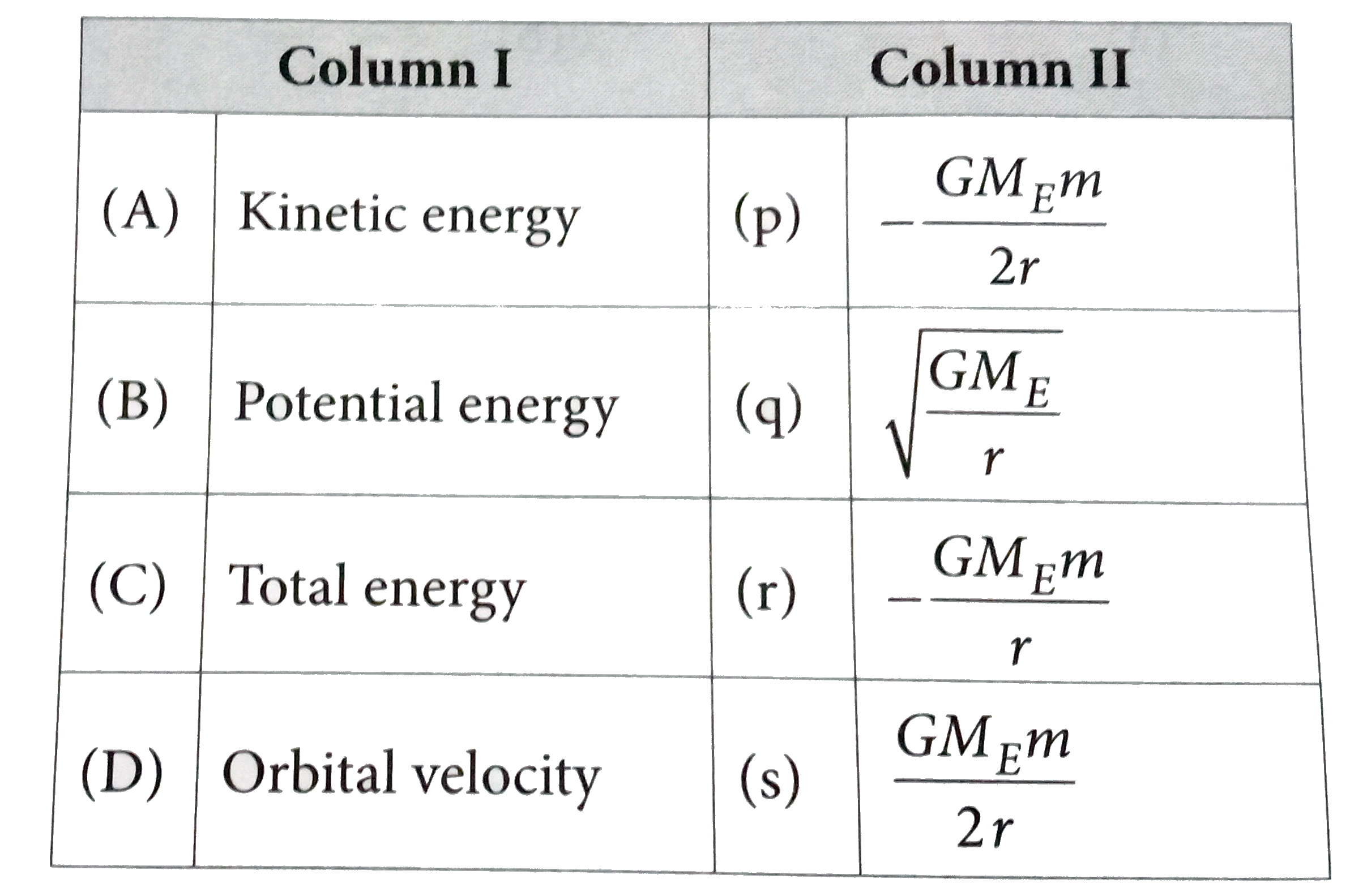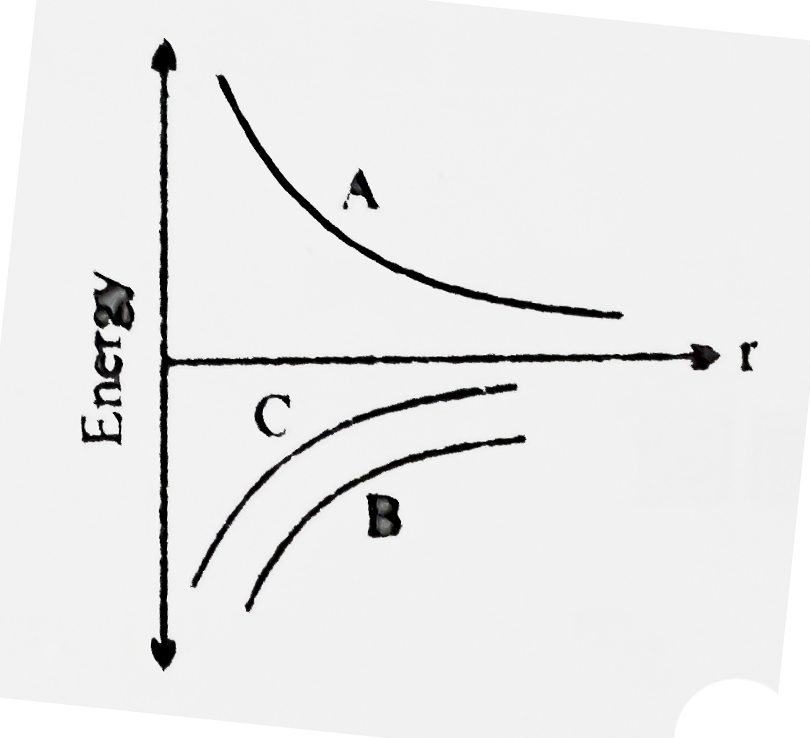Complete Solutions to Energy Of An Orbiting Satellite of chapter GRAVITATION of Class 11 book with complete answers and questions
| Class 11 | PHYSICS |
| Chapter | GRAVITATION |
| NCERT FINGERTIPS | Energy Of An Orbiting Satellite |
| Number Of Questions | 15 |
| Academic Year | 2023-24 |
Match the Column I with Column II
For a satellite in circular orbit

(where `M_(E)` is the mass of the earth , m is the mass of the satellite and r is the radius of the orbit )
View SolutionA satellite is orbiting the earth in a circular orbit of radius `r`. Its
View SolutionThe figure shows the variation of energy with the orbit radius of a body in circular planetary motion. Find the correct statements about the curves `A,B` and `C`

View SolutionTwo satellites of earth `S_(1)` and `S_(2)` are moving in the same orbit. The mass of `S_(1)` is four times the mass of `S_(2)`. Which one of the following statements is true?
View SolutionIn motion of an object under the gravitational influence of another object. Which of the following quantities is not conserved ?
View SolutionA comet orbits the Sun in a highly elliptical orbit. Does the comet have a constant (a) linear speed (b) angular speed (c) angular momentum (d) kinetic energy (e) potential energy (f) total energy throughout its orbit? Neglect any mass loss of the comet when it comes very close to the Sun.
View SolutionA satellite of mass `m` is in a circular orbit of radius `2R_(E)` about the earth. The energy required to transfer it to a circular orbit of radius `4R_(E)` is (where `M_(E)` and `R_(E)` is the mass and radius of the earth respectively)
View Solutionin the previous question, the change in potential energy.
View SolutionThe additional kinetic energy to be provided to a satellite of mass `m` revolving around a planet of mass `M`, to transfer it forms a circular orbit of radius `R_(1)` to another of radius `R_(2)(R_(2)gtR_(1))` is
View SolutionA satellite of a mass `m` orbits the earth at a height `h` above the surface of the earth. How much energy must be expended to rocket the satellite out of earth's gravitational influence? (where `M_(E)` and `R_(E)` be mass and radius of the earth respectively)
View SolutionFor a satellite moving in a circular orbit around the earth, the ratio of its potential energy to kinetic energy is
View SolutionAn artificial satellite moving in a circular orbit around the earth has a total energy `E_(0)`. Its potential energy is
View SolutionA rocket is launched vertically from the surface of earth with an initial velocity `v`. How far above the surface of earth it will go? Neglect the air resistance.
View SolutionAn asteroid of mass `m` is approaching earth, initially at a distance `10R_(E)` with speed `v_(i)`. It hits earth with a speed `v_(f)` (`R_(E)` and `M_(E)` are radius and mass of earth),. Then
View SolutionTwo stars each of mass `M` and radius `R` are approaching each other for a head-on collision. They start approaching each other when their separation is `rgt gtR`. If their speed at this separation are negligible, the speed `v` with which they collide would be
View Solution
Energy Of An Orbiting Satellite questions and complete solutions for chapter GRAVITATION of NCERT FINGERTIPS PHYSICS (HINGLISH) of Class 11
All Exercises from NCERT FINGERTIPS Class 11 PHYSICS GRAVITATION
- Acceleration Due To Gravity
- Acceleration Due To Gravity Below And Above The Surface Of Earth
- Assertion And Reason
- Earth Satellite
- Energy Of An Orbiting Satellite
- Escape Speed
- Geostationary And Polar Satellites
- Gravitational Potential Energy
- Higher Order Thinking Skills
- Kepler Laws
- Miscellaneous Question
- NCERT Exemplar
- The Gravitational Constant
- Universal Law Of Gravitations
- Weightlessness